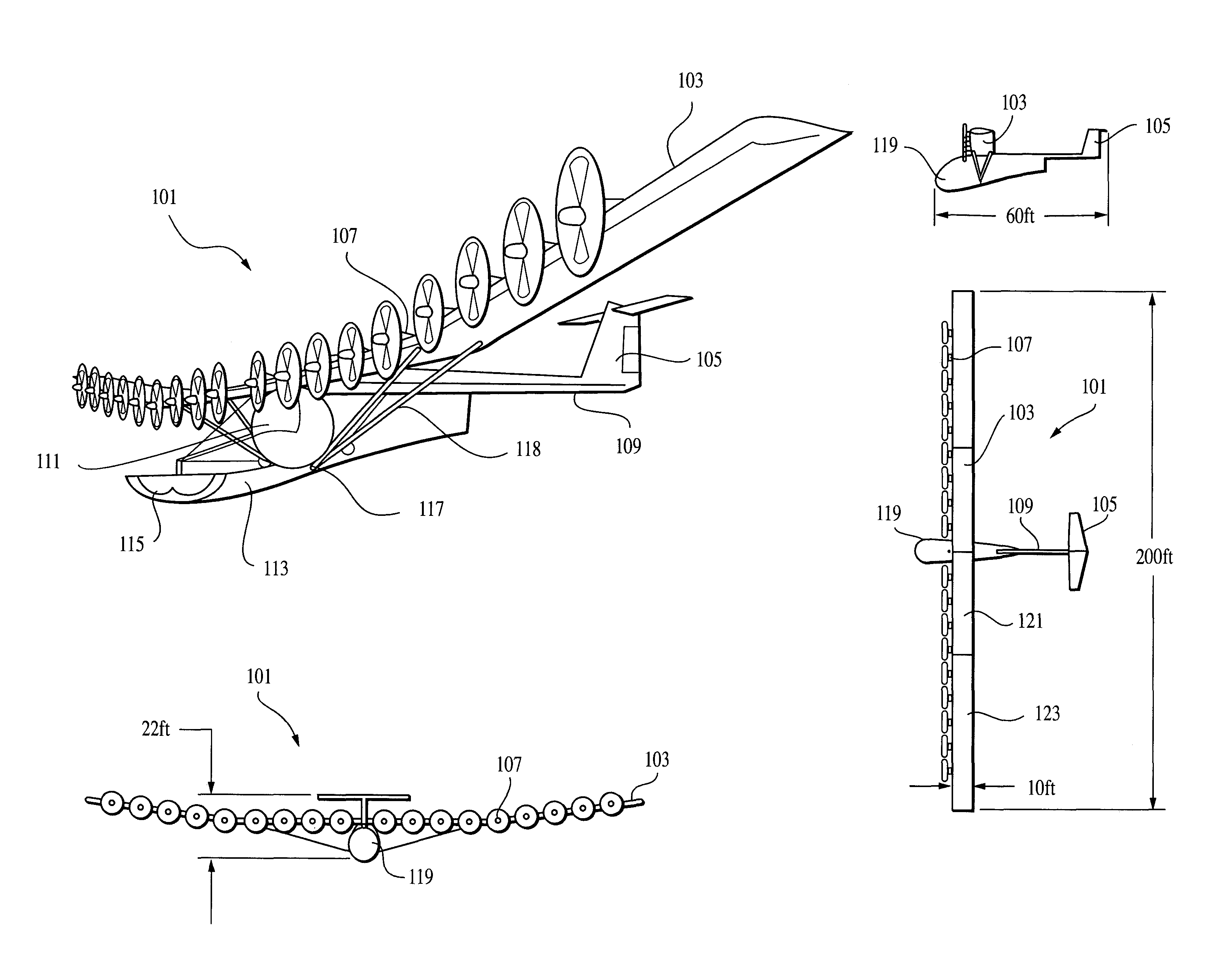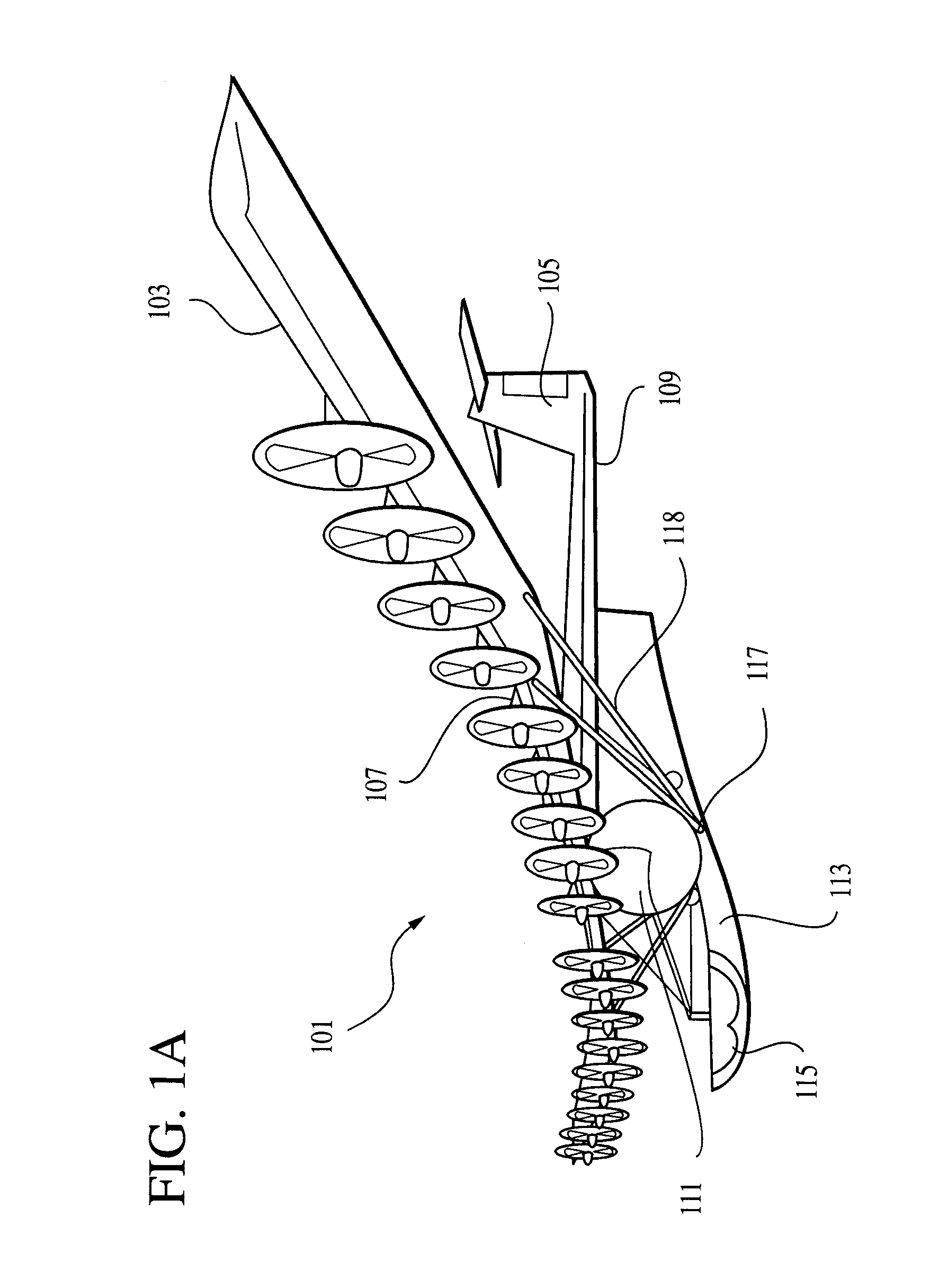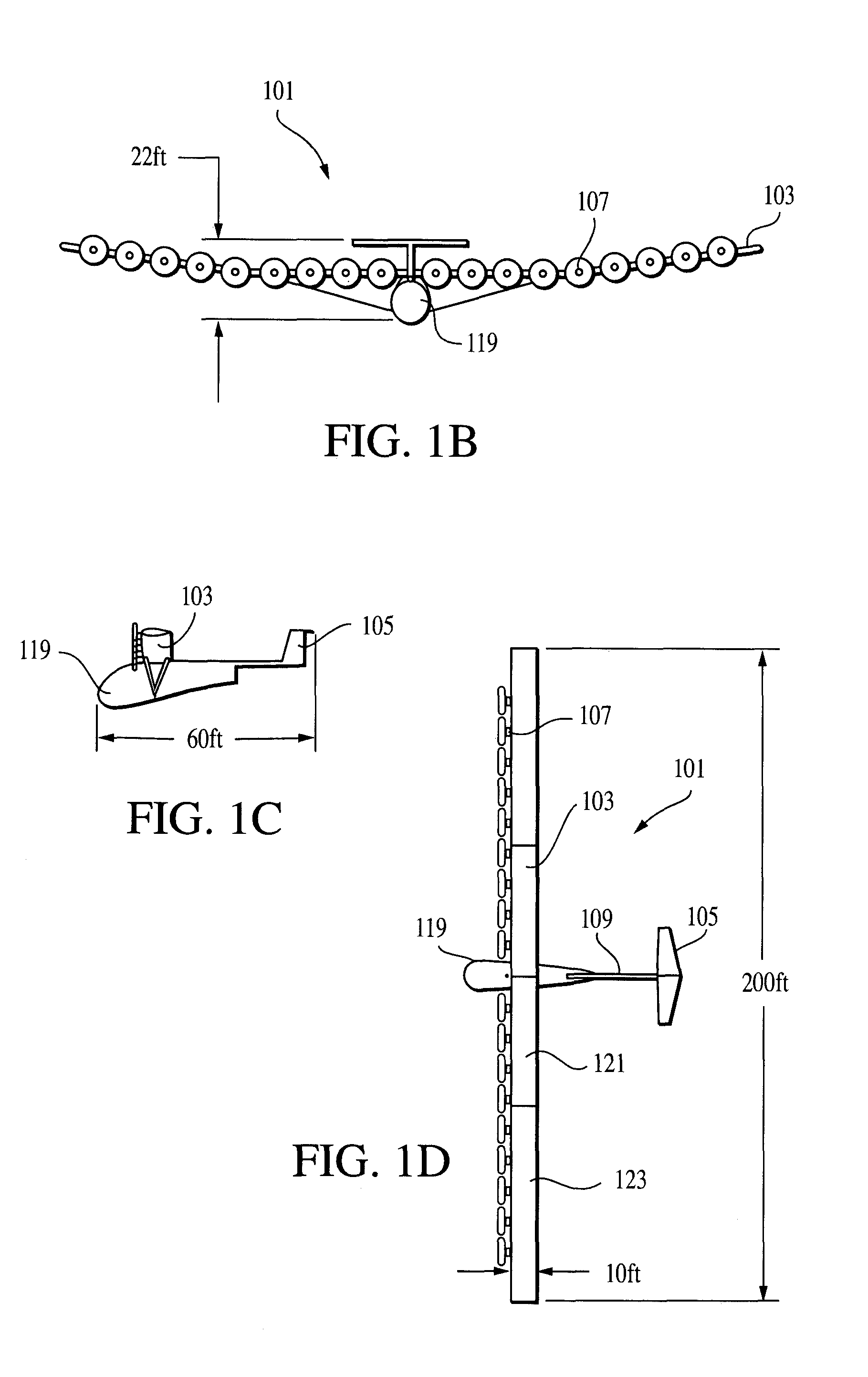Hydrogen powered aircraft
a hydrogen-powered aircraft technology, applied in the field of aircraft and their component systems, can solve the problems of heavy, drag-producing countermeasures for compensation, and high cost of a big increase in negative pitching moment, and achieve the effects of low power consumption, simplicity and reliability
- Summary
- Abstract
- Description
- Claims
- Application Information
AI Technical Summary
Benefits of technology
Problems solved by technology
Method used
Image
Examples
Embodiment Construction
First Preferred Aircraft Embodiment
Fuel and Power Systems
[0046]A first preferred, high-performance aircraft embodiment 101, capable of high-altitude stationkeeping within tight altitude and perimeter boundaries for extended periods of time, according to the present invention, is shown in FIGS. 1-4. The aircraft includes a wing 103, an empennage 105 and a plurality of motors 107. The empennage is preferably suspended from the wing on an extension 109 to provide the moment arm necessary to control pitch and yaw. Thus, the extension's length will be based on the empennage's surface area and the needed pitching and yawing moments.
[0047]A fuel tank 111 is suspended below the wing using trusses and / or wires. A payload section 113 containing a communications payload 115 extends forward from a lower portion 117 of the fuel tank, and is suspended using trusses, wires and / or supports 118. Preferably, the aircraft includes a cowling or fuselage portion 119 (not shown in FIG. 1 to expose conten...
PUM
 Login to View More
Login to View More Abstract
Description
Claims
Application Information
 Login to View More
Login to View More - R&D
- Intellectual Property
- Life Sciences
- Materials
- Tech Scout
- Unparalleled Data Quality
- Higher Quality Content
- 60% Fewer Hallucinations
Browse by: Latest US Patents, China's latest patents, Technical Efficacy Thesaurus, Application Domain, Technology Topic, Popular Technical Reports.
© 2025 PatSnap. All rights reserved.Legal|Privacy policy|Modern Slavery Act Transparency Statement|Sitemap|About US| Contact US: help@patsnap.com



